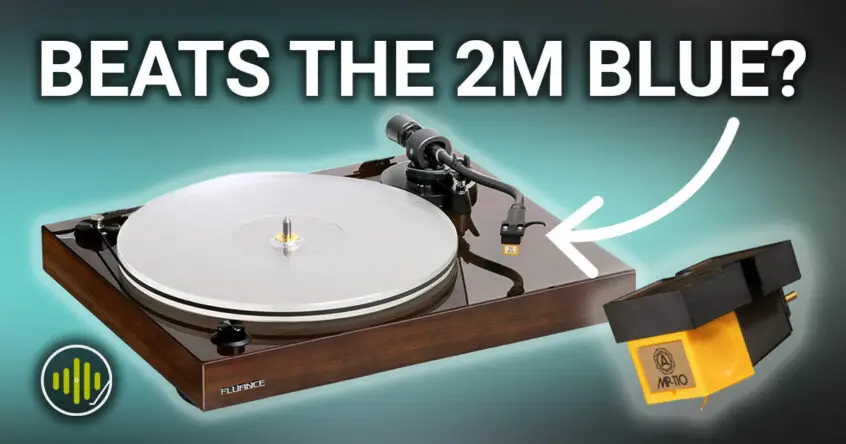The RT85 sits at the top of Fluance’s Referrence Series of turntables, which starts with the RT82 model and offers incremental upgrades at each step.
Originally, the RT85 shipped only with an Ortofon 2M Blue cartridge—a superb cartridge at its price point and one I’ve used for many years.
That said, the Ortofon range of cartridges have a distinct sound signature, and like all things audio, personal taste and subjectivity mean that it’s inevitably not to everyone’s taste.
This is where the “N” in the product name comes in; you can now order the popular RT85 with a pre-aligned Nagaoka MP110 cartridge.
I recently reviewed the more affordable Fluance RT81+ and was very impressed with its performance at such an accessible price, so I’m keen to see how the Reference Series measures up. I’m also interested to hear how the MP-110 compares with the 2M-Blue.
Fluance Refference Series
The core mechanics of each Fluance Reference Series turntables are essentially the same. The tonearm, motor, plinth, and suspended isolation feet remain the same across the RT82, 83, 84, and 85 models. What changes is the pre-fitted cartridge and the platter.
The beauty of this is that you can start at the RT82 for just $299 and upgrade the stylus and platter later to effectively end up with an RT85 ($499) spec, piece-by-piece.
That being said, it’s significantly more expensive in the long run to build an RT85 piecemeal. (Just over $600 if you take an Ortofon Blue into consideration).
It’s nice, however, to know that the highly affordable RT82 isn’t a dead-end.
Core Features of the Reference Series
Fluance turntables have a reputation for sporting impressive features at an affordable price, helped, in part, by their direct-to-consumer model, whereby they sell their turntables directly to the public instead of through a traditional dealer/distributor model.
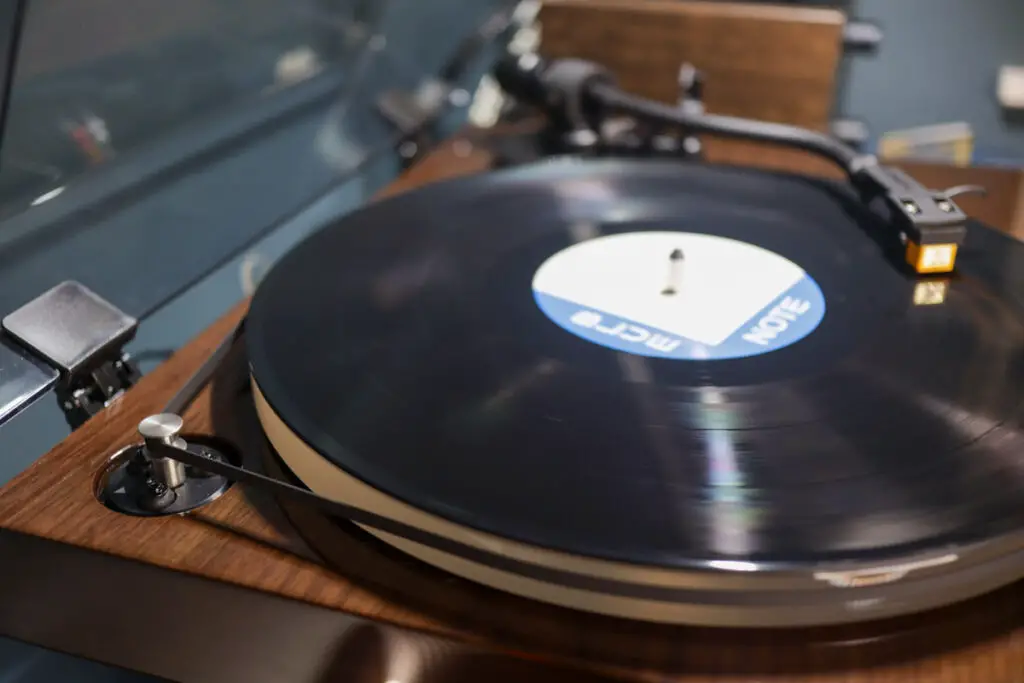
Servo Motor
The Reference Series features a servo motor that is located further away from the patter for better noise isolation, and, because it’s a servo motor, it also helps keep the speed more consistent than the RT81+.
Servo motors have a feedback mechanism that can adjust the motor’s speed based on deviations from the desired RPM, ensuring a more consistent playback speed.
The RT81+ DC Motor states a wow and flutter rating of 0.2%, which is below what most people can hear anyway, but this aside, the RT85 does boast an even lower number of 0.07%.
Like all Fluance turntables, the playback speed is easily adjusted using a dial that feels higher-quality than its price-tag would suggest. This stands in stark contrast to its contemporaries that usually only provide a simple rocker switch, or farily flimsy-feeling push-button speed controls.
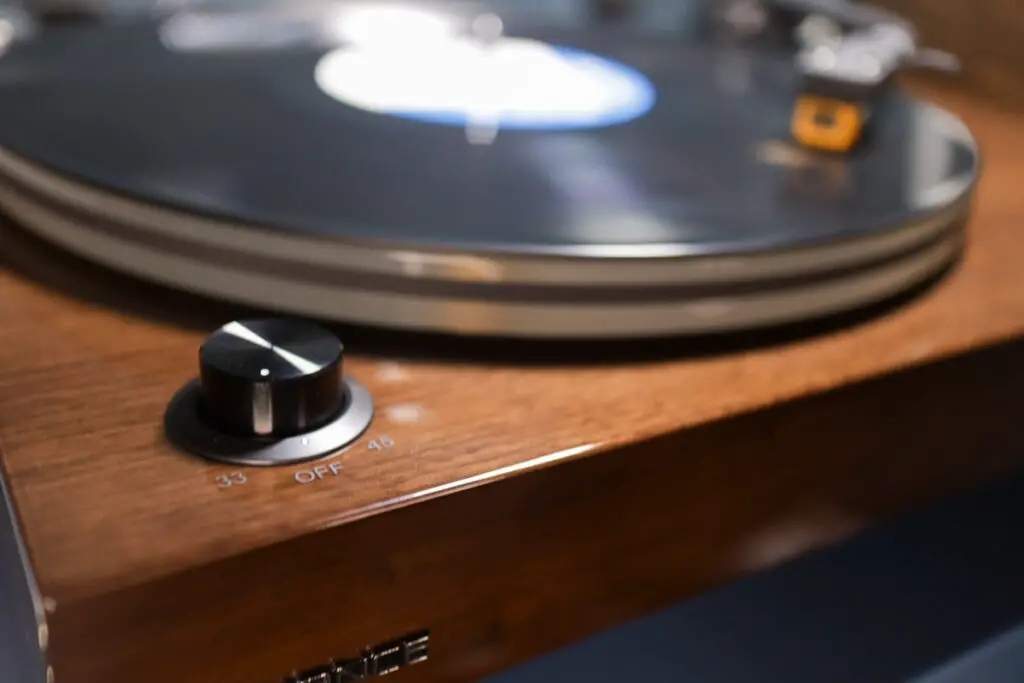
High Mass MDF Plinth
Another aspect that stands out about Fluance Turntables is the sturdy MDF platter. I can’t think of another brand I’ve covered that supplies such a substantial plinth at such an obtainable price.
In that sense, the Fluance models feel much more sturdy than other composite fiber alternatives I’ve seen in the likes of Pro-Ject’s E1 and Rega’s iconic Planar 1 (the latter of which is proportionately quite expensive if you’re shopping from the US).
The MDF base is also multi-layered, which, along with its size, further helps to prevent unwanted resonance from transferring into the audio system.
If that wasn’t a solid enough foundation, the base is supported by three rubber spike-style isolation feet, which are also height adjustable. This makes the Fluance range of turntables very well isolated from unwanted vibrations and much easier to level than much of the competition.
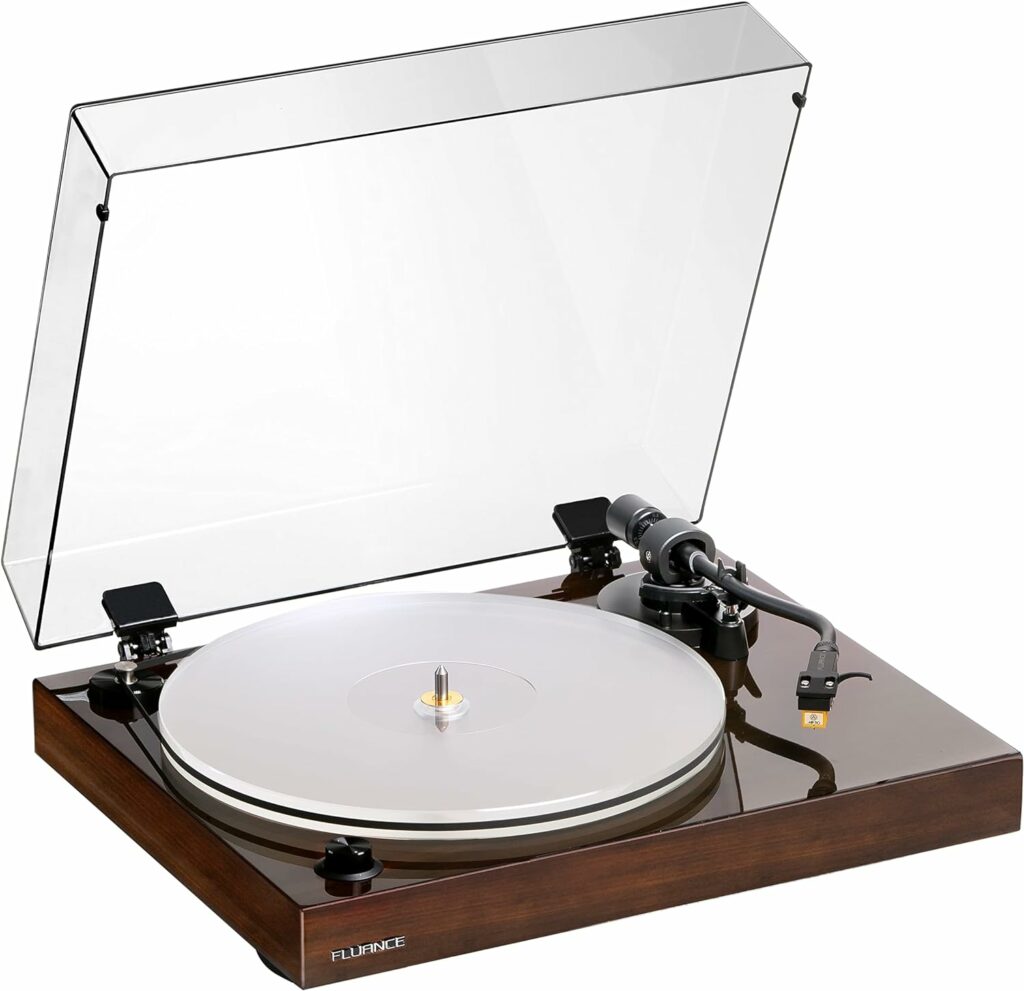
Acrylic Platter (RT85 Only)
The RT85 and RT85N (being the top-of-line model) benefit from a 3 lbs (1.56 kg) acrylic platter over the standard aluminum option.
Acrylic platters offer superb resonance-damping qualities both from external sources and the playback process itself.
Being the same basic material as a vinyl record, we get a “coupling” effect between the record and the acrylic platter that, in theory, makes it easier for the vibrations caused by the stylus tracking the groove to defuse away from the record surface.
In addition, by weighing a substantial 3 lbs, the acrylic platter helps maintain a more consistent rotation speed. In short, the inertia from a heavier platter means it is less susceptible to speed fluctuations.
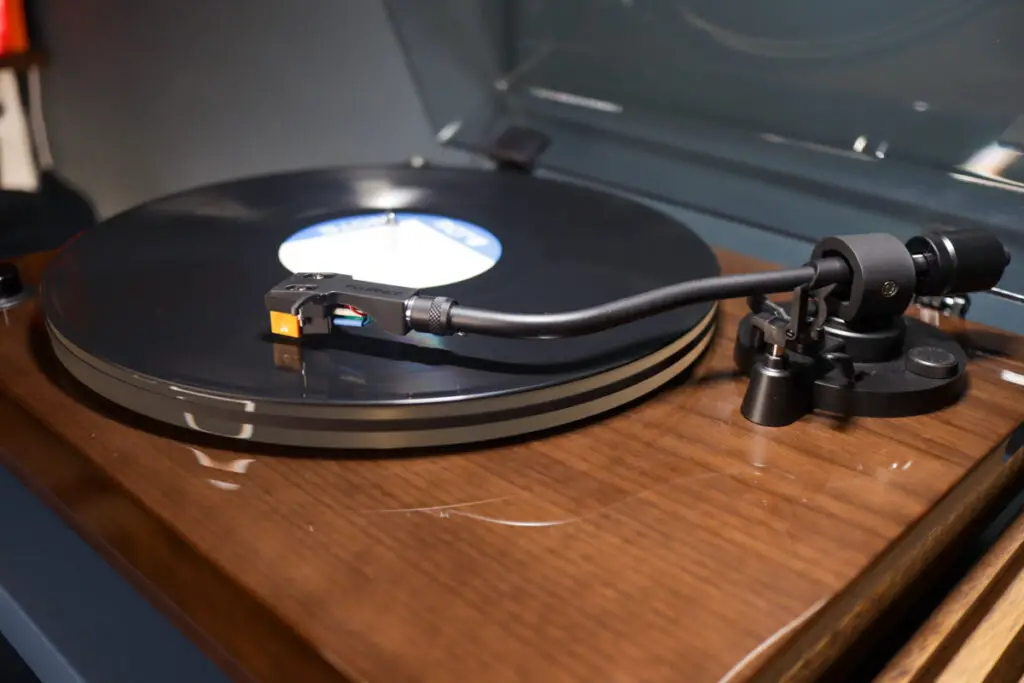
S-Shaped Tonearm & Detachable Headshell
Fluance Reference series decks are equipped with an aluminum s-shaped tonearm and detachable headshells, making cartridge swapping nice and simple.
It’s worth noting that the VTA (vertical tracking angle) of the tonearm is fixed, though, meaning any replacement cartridge will need to be compatible with the existing height.
Note on the MP110 Cartridge Height: The Ortofon 2MBlue has a cartridge height of 0.71 inches (18 mm), while the MP-110 is 0.73 inches (18.5 mm). While this is a small difference, I was curious to see if Fluance adjusted the tonearm VTA for each cartridge…
According to Fluance they do adjust the VTA on the RT85N model to accommodate the MP-110’s different stylus raking angle (SRA) — That’s the angle at which the stylus tracks the groove.
The MP-110 has a soft damper, and the Fluance team found that adjusting the VTA to account for this made a big difference in sonic performance.
Does this mean you can’t put an Ortofon cartridge on the RT-85N model? No, but it does mean this model is optimized for the Nagaoka.
Ortofon 2M Blue vs Nagaoka MP-110
To my ears, the Ortofon 2M Blue reveals more detail and has clearer instrument separation in the mid-range. There’s also a little more zing up top. That said, the MP-110 has a richer and more full presentation—particularly in the low-frequencies. It’s a much more laid-back and relaxed sound than the 2M Blue, which some listeners may prefer if a warmer sound is what you’re seeking.
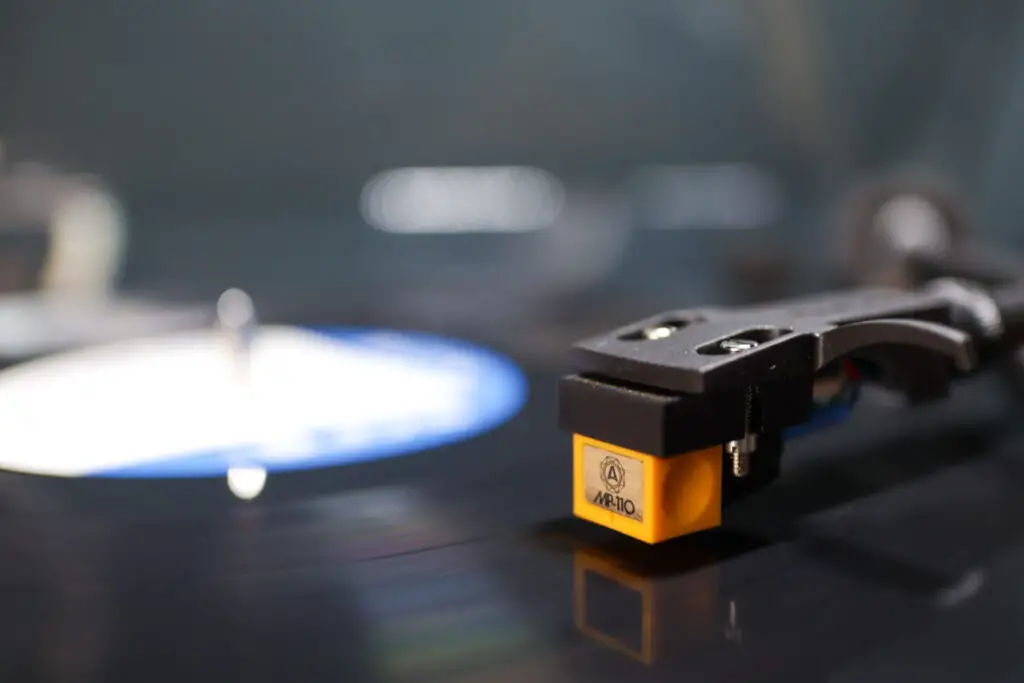
Other Features of Note:
Unlike the RT81+ (and the RT-80 for that matter), there is no built-in phono stage with any of the Reference Series Fluance decks, so you’ll need a phono preamp (either external, or built into your amplifier/receiver).
There is, however, still the “auto-stop” feature found in their RT81+ model, which you may find handy to prevent wear and tear on your stylus if you have a tendency to fall asleep during an evening listening session.
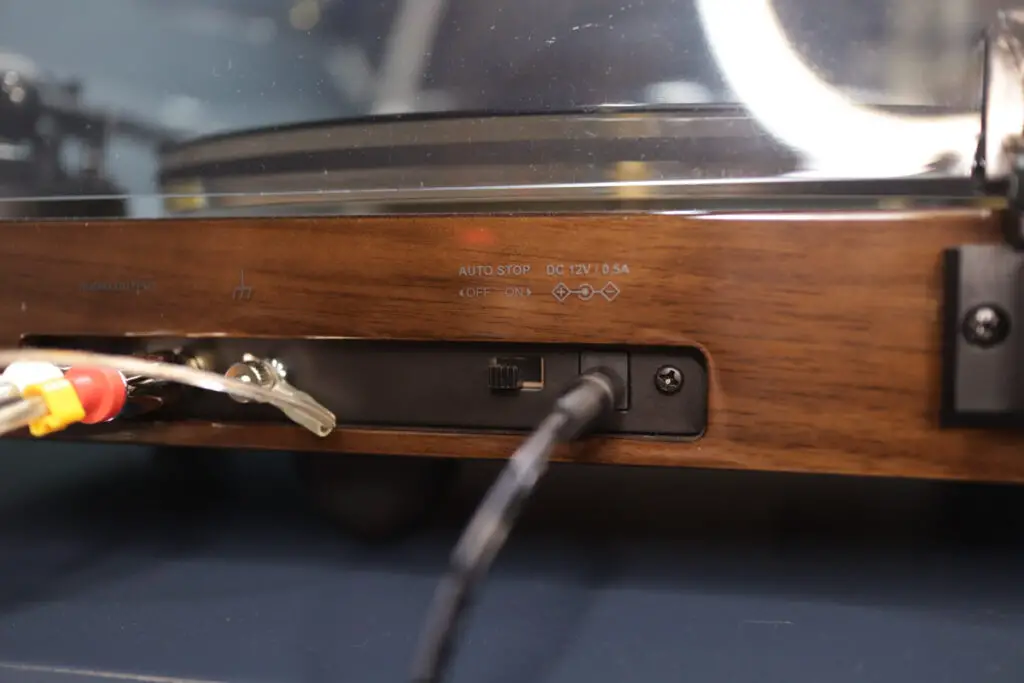
The tonearm will not lift from the record surface like some semi-automated turntable designs; instead, the platter simply stops spinning, leaving the stylus in contact with your record until you lift the tonearm manually.
The downside of this feature is that, on some records that are cut very close to the center, you may find that the record stops spinning prematurely before the record finishes. Fortunately, if this becomes an issue, you can simply turn it off using the switch located at the rear.
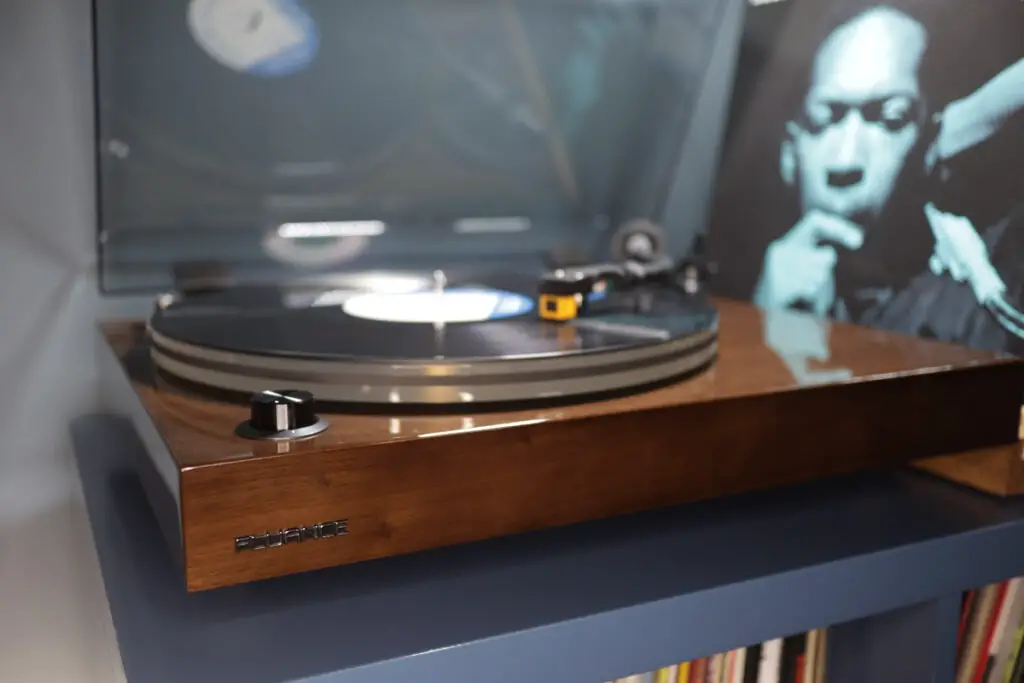
The Bottom Line – Should You Buy the Fluance RT85N
The Fluance Reference Series of turntables have rightly earned a reputation as some of the best bang-for-your-buck models on the market.
In many cases, they’re offering a build quality that makes even some of the most established entry-level turntables feel cheap or uninspiring.
Let me explain what I mean:
Where some Audio Technica models can feel a little plasticky and flimsy, the Fluance RT85, in particular, feels sturdy and robust.
Where some Pro-Ject & Rega models can feel very minimalist and basic, the Fluance models offer something that arguably, in many ways, retains a little more luxury.
Having reviewed two of their turntables now, I’m getting a real sense of how the company appears to strike a balance between audiophile purism and “lifestyle audio” in their product design.
Many purists will argue that models from the likes of Rega or Pro-Ject are better engineered when it comes to the basic playback mechanics of bearings and tonearm design, for example.
While there’s some merit in this, a 100% focus on the mechanics at the expense of all aesthetics and the experience of using a deck can leave some of the more affordable models feeling a little utilitarian.
For most people getting into vinyl or returning to the hobby, the balance of aesthetics, user experience, and sound quality on offer here is difficult to argue with. Fluance has successfully married all three of these aspects, and even better, they’ve achieved it at a price that’s undoubtedly shaking up the market.
Further Reading:

